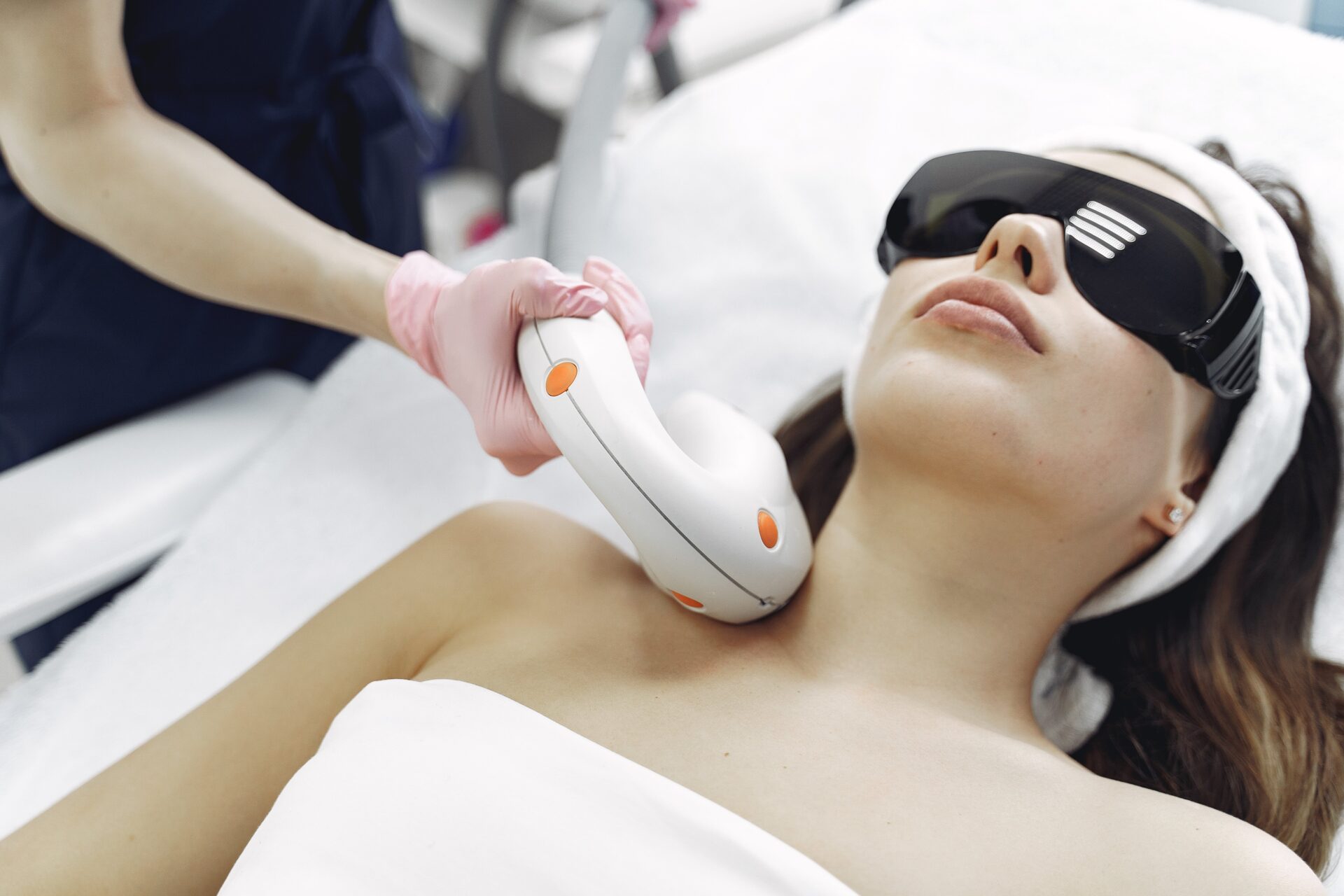Introduction
In the ever-evolving landscape of skincare, laser technology has become a cornerstone in addressing various skin concerns. This comprehensive guide aims to decode the intricacies of laser devices, providing an understanding of the diverse treatment options available and empowering individuals to make informed decisions about their skincare journey.
I. Fundamentals of Laser Technology
1.1 How Lasers Work
At its core, a laser (Light Amplification by Stimulated Emission of Radiation) emits focused light energy that can target specific pigments, tissues, or structures in the skin. Understanding the basics of laser technology is key to appreciating its diverse applications in skincare.
1.2 Types of Lasers*
Laser devices vary in their wavelengths, each designed to target specific skin concerns. Common types include ablative lasers, non-ablative lasers, and fractional lasers. Each type offers unique benefits and considerations.
II. Ablative vs. Non-Ablative Lasers
2.1 Ablative Lasers: Precision Resurfacing*
Ablative lasers remove outer layers of skin, promoting collagen production and addressing concerns like wrinkles, scars, and pigmentation. CO2 and Erbium lasers are common in this category.
2.2 Non-Ablative Lasers: Subtle Renewal*
Non-ablative lasers penetrate the skin without removing layers, targeting the dermis to stimulate collagen. These lasers are suitable for milder concerns, with less downtime compared to ablative lasers.
III. Fractional Laser Technology
3.1 How Fractional Lasers Differ*
Fractional lasers deliver microscopic laser columns to only a fraction of the skin, leaving surrounding areas untouched. This promotes faster healing and collagen production, making it effective for both resurfacing and rejuvenation.
3.2 Applications and Benefits*
Fractional lasers are versatile, addressing a range of concerns such as fine lines, scars, and uneven skin tone. They strike a balance between the effectiveness of ablative lasers and the minimal downtime of non-ablative lasers.
IV. Laser Applications for Specific Concerns
4.1 Pigmentation and Sun Damage*
Lasers can target excess pigmentation caused by sun damage or age spots. Specific lasers, like Q-switched lasers, focus on breaking down pigments for clearer, more even-toned skin.
4.2 Wrinkles and Fine Lines*
Fractional lasers and ablative lasers are effective in addressing wrinkles by stimulating collagen production and improving skin texture. Multiple sessions may be required for optimal results.
4.3 Acne Scars*
Certain lasers, such as fractional lasers and CO2 lasers, can improve the appearance of acne scars by promoting collagen remodeling and smoothing the skin’s surface.
V. Hair Removal with Laser Technology
5.1 Laser Hair Removal Process*
Laser hair removal utilizes concentrated light to target hair follicles, inhibiting their ability to grow. The procedure is effective for reducing unwanted hair on various body areas.
5.2 Considerations and Skin Types*
Different lasers are suitable for various skin types and hair colors. Nd:YAG lasers, for example, are effective for darker skin tones, while alexandrite lasers are often used for lighter skin tones.
VI. Safety Considerations and Possible Side Effects
6.1 Importance of Professional Guidance*
Safety is paramount in laser treatments. Seeking professional guidance ensures proper assessment of skin type, the selection of appropriate lasers, and adherence to safety protocols for optimal outcomes.
6.2 Potential Side Effects*
While laser treatments are generally safe, potential side effects may include redness, swelling, or temporary pigmentation changes. Understanding these possibilities and following aftercare instructions is essential.
VII. Choosing the Right Laser Device and Professional
7.1 Professional Qualifications*
Selecting a qualified and experienced skincare professional is crucial. Ensure they have the necessary credentials and expertise to perform the specific laser treatment you are considering.
7.2 Tailoring Treatments to Individual Needs*
Different laser devices and wavelengths cater to specific concerns and skin types. A knowledgeable professional will tailor treatments to individual needs, ensuring safety and effectiveness.
VIII. Post-Treatment Care and Recovery
8.1 Post-Treatment Skincare Routine*
Following a post-treatment skincare routine is essential for optimal recovery. This may include gentle cleansing, moisturizing, sun protection, and avoiding certain products to promote healing.
8.2 Downtime and Resumption of Activities*
Downtime varies depending on the type of laser treatment. Some procedures may have minimal downtime, while others may require a few days of recovery. Individuals should plan accordingly and follow their skincare professional’s recommendations.
IX. Advancements in Laser Technology and Future Trends
9.1 Emerging Technologies*
The field of laser technology continues to evolve. Emerging technologies may include improvements in precision, reduced downtime, and enhanced efficacy for a broader range of skin concerns.
9.2 Integration with Other Skincare Modalities*
The future may see increased integration of laser technology with other skincare modalities, offering comprehensive treatment plans that address various aspects of skin health.
X. Conclusion
In conclusion, decoding laser devices is a crucial step in understanding the vast array of treatment options available for skincare. With advancements in technology and a wealth of choices, individuals can navigate the world of laser treatments with confidence. By seeking professional guidance, understanding specific concerns, and following appropriate aftercare, individuals can harness the transformative power of laser technology for radiant and healthy skin.

